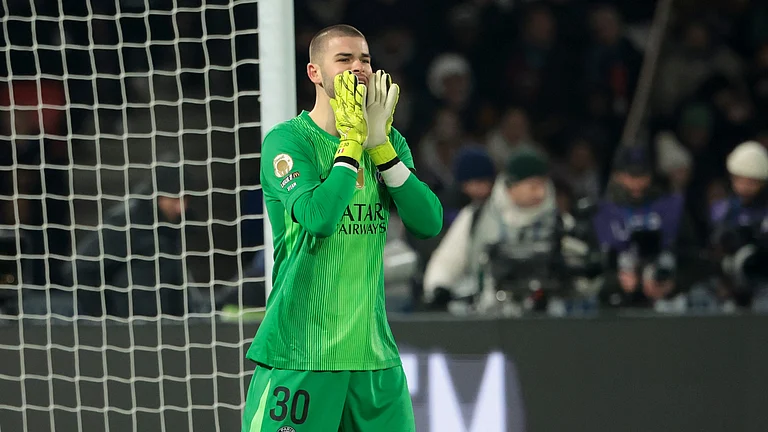Love lies in the eyes of the beholder. This is true as much for heterosexuals as for homosexuals (men and women), as also those with different sexual orientations. However, for centuries, even as several kinds of desires, attractions, and sexual activities existed within different civilizations, either hidden or open, a mindset was constructed to distinguish between what was natural and unnatural, biological and constructed, moral and depraved.
People were hunted down, banished from societies, imprisoned, staked, and killed for acts and emotions that were deemed to be against nature. Spiritual gurus, religious crusaders, scientists, philosophers, moralists, civil society pioneers, and policy makers ganged up to cap a social behavior, or eject it completely. The choices of those who weren’t ‘straight’ were nipped in the bud. Those flowers never bloomed, or hid in the dark, away from sunlight.
Only now have they come out. In India, this legally happened less than two years ago. But for 50 years, a new science, philosophy, and social code emerged that justified the ways of gays, lesbians, bisexuals, and others as natural, biological, and moral. In this milieu, the new constructs contend that homosexuality is as normal as heterosexuality – what defines the sexual and other behavior of one set redefines it for the other in a different manner.
Darwinian evolution through ‘survival of the fittest’, and the procreation drive logically implied that hetero was how nature (and, of course, God) wanted us to be. More numbers, which can only be achieved through high birth rates, was the best way to ensure not only for a specie to live for longer times, but to assure that there can be more members fit enough to survive. Larger numbers crowd out food and physical spaces for competing species.
Recent research has turned this logic on its head. For example, the concept of “kin selection” maintains that homosexuality helps in “perpetuating familial genes”, and the behavior is nature’s way to enable a family’s generations to thrive in the future. It leads to a procreation drive within the narrow confines in a family, which can easily add up at the societal and specie levels. According to a media report, “Gay uncles and aunts, for example, are ‘helpers in the nest’ that help raise other family members’ children”.
Earlier in this century, Italian researchers concluded that the female relatives of homosexual men “tended to have more offspring than those of heterosexual men”. More importantly, the female relatives on the homosexual’s mother’s side tended to have more offspring than those on the father’s side. Their conclusion was that genes on the X chromosome of the X-Y combination enhanced female fertility, as well as homosexual tendencies in males.
The moralists will pipe in again with the procreation debate. One of the spiritual gurus, when asked if the relationship between Lord Shiva and Goddess Mohini (a woman avatar of Lord Vishnu) was homosexual, explained, “If this is blamed as homosexuality, let the present homosexuality between two males also result in the delivery of the son by any one male partner because… (it) resulted in the delivery of the son in the case of Lord Shiva and Lord Vishnu. Hence, trail for similarity here is absurd and foolish.”
Such arguments can be knocked down by a discussion on heterosexual partners, who cannot bear children, and seek treatment to enhance their fertility rates. Since, they are naturally unable to have kids, don’t they fall in the same categories as LGBTQ? What about heterosexuals, who make a definitive choice not to have children? Is the love between them unnatural and non-biological, if procreation is the natural order among animals?
However, more advances in gene research have managed to drill several nails in the coffin of ancient logic. Still, one has to be careful to think in terms of a single or multiple gay gene(s) because the logic is fraught with problems. If people are born in a certain way, which is biological, and don’t become different because of their will and choices, then what stops nations and societies to enact laws that aim to cure and eradicate homosexuality?
Another argument is that if homosexuality is innate, and genetically driven, then the people within this community should be treated the same way as we treat other races, and ethnic communities. The former should receive the same treatment that the African-Americans get in the US, and Europeans get in India. The social counter is that even if there is scientific evidence for gay gene(s), the society can still morally ostracize gays, lesbians, and others.
It is in this context that the most recent and most broad-based research is relevant. A 2019 article in Scientific American said that a study, which involved half-a-million men and women, found that “although genetics are certainly involved in who people chose to have sex with, there are no specific genetic predictors”. As one of the co-authors clarified, “The message should remain the same that this is a complex behavior that genetics definitely plays a part in.”
On the overall genetic similarity between people who had same-sex experiences, genes seemed to account for 8-25% of the behavior. When it came to five specific markers, two of which were related to sex hormones and smell – “both factors that play a role in sexual attraction” – the linkage was less than 1%. Thus, genetics, and “other biological influences” and social environment, may be responsible for our physical, emotional, and sexual behaviors.
For instance, some experts contend that different children based on their order of birth from a single mother may witness “differential exposures to hormone levels in the womb during fetal development”. This is generally found among male children. But it may, and can, change the masculinity levels in their brains, and become a factor to turn them into homosexuals at a later age. Scientists dubbed this as the “fraternal birth order effect”.
Several studies initially concluded that homosexual men tend to have a larger number of older siblings. Later ones finessed them. Only the number of older brothers, and not older sisters, younger brothers, and younger sisters, enhanced the chances. However, each older brother increased the odds of homosexuality among the younger brothers by 28-48%. The pre-natal connection was established when it was found that the same tendencies occurred in males who were not raised along with their biological brothers.
Obviously, the family and social environment has its own impact on womanhood, and manhood, as it does on other psychological behaviors. For example, if an individual is unable to have physical contact with the person of different sex, she may experiment with physicality with a member of the same sex. Pressures from peers to have same-sex partnerships also come into play. Research and personal experiences confirm these two trends.
Psychologists have analyzed how natural connects can shape a person’s emotions, and later sexual desires. According to Daryl Bern, some children are attracted by the activities of others from the same gender, and some by those that are typical of another gender. The former conformists feel different from the members of the opposite genders, and the latter non-conformists feel different from members of their own. There are tendencies for psychological arousal, which later transforms into sexual arousal, when one is near the members one considers different.
Therefore, it is emotionally natural for heterosexual desires to emerge when you spend more time with members of the same sex, and homosexual ones when you do this with the opposite gender. In psychology, Bern’s theory is known as the “exotic becomes erotic” one. This was later proved by a few studies, although their sample sizes were small, which found that gays and lesbians spend a lot of time as kids with the opposite gender for various reasons.
Clearly, as LGBTQ activists maintain, the ecosystem of their members is both unique and natural. Their identities are not specifically, and only, defined by their sexual urges and relationships. It includes others related to social equations, emotional linkages, connections based on behavior, and diet- and habitat-based changes. As Harish Iyer, a LGBTQ rights activist says, “We are a collage of multiple identities… (and) sex, gender, and sexuality are just a few of the vital facets that make the whole of us (See Page 12).”
Now the science is on their side, and so are the laws in at least the progressive countries. The politics too, although divided, seems to be veering towards a comprehensive recognition of their rights, and their ability to contribute to economic gains, and nation building exercises. However, the society is rabidly divided among intense supporters and radical opponents. To change people will require long-term and dramatic behavior changes.
It is important that LGBTQs are visible, and interact with hetero counterparts. What is required is education to dispel the myths, and to maintain that they are natural. They have the same emotions and feelings, intellect, and bonding. Only their physical traits and sexual desires may be seen as different.
***
Exotic To Erotic
The exotic becomes erotic theory contends that genes, hormones, and brains don’t determine our sexual behavior. This happens through our temperament. This leads to influence on activities, and who we play with -- children of the same sex or different ones. “So, while an aggressive boy might relish rough sports, a girl with a gentle disposition may prefer jopscotch.” So, the feelings unlike your same-sex peers make you perceive them as exotic, and this produces psychological arousal in the form of faster heartbeats, and increased blood pressure. This is later transformed into sexual attraction. The exotic, therefore, becomes erotic. Hence, children who play with same sexes, get attracted to the opposite sex. And those who play other sex kids, are later attracted to the same-sex members. According to an article in Psychology Today, “Whether or not this theory is accepted, and thus far it has earned both praise and pans from the other experts, it is sure to add fresh fodder to the debate over whether sexual orientation is born or bred.” Until, now, science hasn’t decided. But a more complex picture may emerge, where several factors may decide our desires and attractions. Despite scientific evidence, the moral strictures by several societies may remain.
Exotic, Not Erotic
The exotic becomes erotic theory is critiqued on two grounds. One, there is little scientific evidence to prove it. Most studies cited to build it have small sample sizes, and were contested by other scientists. Two, the claims that this theory “applies equally to both sexes is questioned; instead the argument that it neglects and misrepresents women’s experiences is made”. This is witnessed from the conceptualization of the erotic desire, and analysis of gender conformity and non-conformity. Hence, there is a feeling that different theories, or a combination, may be needed to explain humans’ sexual desires and orientations. For example, some researchers conclude that a better and wider answer may be the “reparation of early childhood trauma”. This accounts for a wider percentage of male homesexuality. In the case of females, there are more reasons for same-sex preferences. These could even take the shape of social abd violent traumas, driven by sexual violence by a person from the opposite sex, either at home or outside, and/or sexual disdain or boredness with partners, who tend to get physical satisfaction elsewhere. The need for comfort and security adds to such dilemmas. This is evident from anecdotal experiences in everyday lives.


























